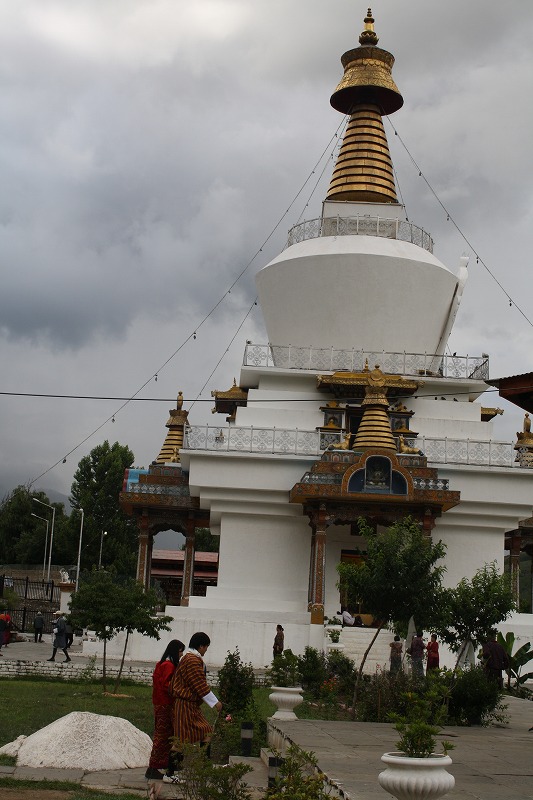one hazard associated with driving downhill is:udell funeral home obituaries
one hazard associated with driving downhill is:
Most cars differ in their allowable operating range for hill descent assist, with some allowing you to go as slow as 3 mph or as fast as 38 mph. brakes / tyre bursts. Your vehicle's engine may get overheated when driving on a steep incline for an extended time. Should your car stall in water, you must get out and seek higher ground immediately. Grime on headlights can make them up to 50 percent less effective and you will need them in tip-top condition when driving through heavy rain. Thick fog makes for extremely poor visibility. Checking that. Pull off the highway if your vehicle engine is in the red zone (too hot). Deer dont look both ways before crossing, Solomon says. Courses available for all skill levels. Organized into an easy-to-follow checklist, this information can be printed off and revisited as often as needed; you may wish to read through it again before taking your car onto a freeway. Drivers moving through a roadway work zone will come across unexpected road signs, signals and traffic control measures. You must drive slowly enough so that your brakes can hold you back without getting too hot. For instance, it is always better to avoid a head-on collision, as it is to collide with a stationary object rather than with one that is moving toward you. The ability to stop a vehicle is probably the most important function of all, and when it fails, its easy for panic to set in. Identifying hazards when driving - Department of Transport and Main Roads Driving at night is far more difficult and dangerous than driving during the day, primarily because your visibility is dramatically reduced. Both front and rear-wheel traction loss can be corrected by looking and steering in the direction you wish the vehicle to go. Truck approaching. Use a low gear when going downhill. If that doesnt work, put the mats under the front wheels (for front-wheel drive) or under the back wheels (for a rear-wheel drive). All it takes is a split second for someone to come into your lane without warning. The following are some of the hazards associated with operating electric forklifts in narrow aisles: Tip-over risks due to narrow clearance: The narrow width of aisles can increase the risk of electric forklifts tipping over. Traffic control personnel often known as flaggers or flagmen may be positioned around a work zone to manage the flow of traffic through the site. Read your owners manual.) Always pay attention to the speed limit. If youve lost pressure, you want to continue traveling in a straight direction until you can stop. Looking through the trees up ahead. Trust me, this is one of the best downhill driving tips if you want to: Save your brakes a lot of unnecessary wear & tear. Helps keep you at a steady speed when driving down a hill or other decline. Looks like a more built-up area up ahead. In both situations you should ease off the accelerator and brake, so that the wheels begin to roll and regain traction. But if the air went out that quick, the tire is gone., Instead of trying to salvage the tire, focus on getting off the road. A blown front right tire will cause the vehicle to drift left, for example. Approaching traffic. Brake failure B. Dehydration C. Engine overheating D. Velocitation. The height of a fall may not be great but the risks are significant because of the working environment, whichinvariably involves hard surfaces such as concrete kerbs.Coupling of vehiclesIt is normally necessary for the vehicle driver to stand between the tractor unit and the trailer when connecting compressed air lines that serve the trailer brakes. Hazardous Driving Conditions: Road Rules for Handling Adverse Weather Checking for pedestrians on the footpath. Looking amongst the parked cars. When you see those signs, it wasnt because the state or county had some extra money and thought theyd go put them up, Solomon says. Frequent intersections B. Pedestrians and truck drivers in the road C. Soft shoulders Again pedestrians on the left. Check the intersection on our left. Scanning through the corner. To correct this type of skid, you must remove your foot from the brake pedal. Front-wheel skids are referred to as understeering, this type of skid usually occurs in front-wheel drive vehicles when braking or accelerating too sharply. It is a major contributing factor to accidents and injuries. This should include food and water, first aid items, warm clothing, a blanket, a snow shovel, an ice scraper and anti-freeze, a flashlight and extra batteries. What are the risk factors associated with driving at work? This will require that they are wide enough and, where appropriate, high enough to allow safemovements of vehicles. When you are going down, gravity works against your intent to slow down . If youre struck by another vehicle, theres no place for your car to go. Low to zero-visibility, freezing temperatures and extremely slippery roads make blizzards the worst weather conditions for driving, by far. Vehicles often build up speed moving down a steep hill. Car indicating to turn across our path. one and a half times. Do not shift into neutral. The nature of expressway driving means that a single accident or collision can end up disrupting many different vehicles. Always keep an eye out for flying debris and other obstacles on the road ahead, when traveling in extremely windy conditions. Heritage-Crystal Clean reduced compliance violations by 25%. When parallel parking, you should select a space that is __________ as long as your car. Car entering on our right. Defect reportingprocedures should be clearly set out. The need for drivers to demonstrate that privately owned vehicles are only used for work purposes if they are insured for business use The need for drivers to hold a licence for the type of vehicle they use and for periodic checks on the validity of that licence. Driver training options, e.g. Once the wheels are on the mat, try turning to get away from the snow. Pedestrian on our right. The hill descent assist will ensure your vehicle doesnt reach an unsafe declining speed by further applying the brakes if needed. Fueling. Use your brakes with caution, in a gentle and controlled manner, to avoid sliding on a slippery road. Which of the following is not a risk typically associated with driving in the city? The brake should lock up the rear wheels and allow the car to come to a stop. Parked cars at the bottom. Tell your friends and family (using #MyCarDoesWhat on Facebook and Twitter). Pedestrian on the footpath on the left. Cars approaching. As with rain, drivers must stick to their low-beam headlights as high-beams may cause glare and worsen visibility. Driving safely at night hinges on maintaining a reasonable speed, and appropriate use of headlights. Cars waiting to turn right. Pedestrians on both sides. Sun glare is incredibly dangerous as it can impair vision and in extreme cases, cause momentary blindness. In an emergency, you may either stop, speed up or turn, to avoid a collision. If I can, Ill signal, move to the right-hand lane, and that will generally take care of it. If you cant, wait for an intersection so you can make a right turn or drive into a service station. Strong winds can be a problem for all car drivers, though they are a particular hazard for drivers of light-weight vehicles, vehicles towing trailers and high-sided recreational vehicles. Pumping the brake pedal repeatedly C.) Resting your foot on the brake pedal Get the Correct ANSWER Rock your vehicle back and forth using the last two steps, until it rolls free. ergonomic considerations, mileages that will be covered. 2. Slightly damp roads can pose more of a hazard, as the water may loosen oil and chemicals which have become ingrained in the asphalt. Helps prevent roll-back when starting up again from a stopped position on an incline. Downhill driving can be unpredictable and dangerous especially if its an extended decent, even on multi-lane roads. Use the following tips to prepare for a cold-weather journey: You must avoid driving in a blizzard at all costs. [There are a lot of] hard corners going down this mountain and if drivers are going too fast they may lose control, Boblett said. In addition, Chad notes the drivers truck was fully loaded and the driver may have been going too fast. In a collision, your face will slam right into it.. Vehicles passing that may cross the centre line. Car entering on the left. going over slippery surfaces (such as oil or grease patches); carrying loads at a dangerous height (e.g. List other hazards associated with vehicles? 1. The driver would be involved in this process by undertaking periodic checks of tyre condition and pressures, windscreen wiper bladesThe journeyThe route that is taken can also have a significant impact on safety.Route planning should take into account other factors such as tunnels, level crossings or low bridges.SchedulingThe proper scheduling of journeys should also be given consideration. You need to consider how likely it is that each hazard will cause harm Step 4: Record your Big truck in front, obstructing our vision of forward traffic. Scan well ahead, look amongst the parked cars. This early detection gives them more time to make a decision about the hazard and respond to it appropriately. There are additional rules, safety tips and considerations which all drivers must keep in mind when using limited access highways. Car waiting to pull out. The term work zone refers to any area on a public road where utility, construction or maintenance work is being conducted. Data from ELDs must be monitored and analyzed. Car entering on our right. During a blizzard, heavy snowfall may obscure your view of the road ahead and road markings, making it difficult to position your vehicle on the road. Looking for potential hazards. Every driver must have a basic understanding of the tactics required to free a vehicle that has become stuck in snow, ice or mud. Blind spots. For some practical advice on what to do in these situations, we asked Solomon to break down 10 . Many parked vehicles. Watching the car changing lanes in front of us, dealing with that. (Note: The FMCSA may delay implementation until 2022. Cars approaching. He/she will need to regularly check that the lights, indicators, windscreen wipers and washers, tyres and brakes are all in good working order. This would take into account factors such as weather and perhaps the possibility that indoor floors might become wet and slippery (e.g. You will be the first one to receive the latest updates and announcements.. Be aware of your downhill speed. Risk factors for motor vehicle crashes that are particularly elevated among teenage drivers include: Parked vehicles on the left. Watch the speed when carrying a heavy load. Many parked cars on our left. During winter months in colder states, some roads will be impassable without snow chains. The big question about this new training is: Is it enough?. Governors Highway Safety Association publishes a list of states that have distracted driving laws, as well as information about the dangers of cell phone usage while driving.Details regarding individual state laws have been summarized by the Governors Highway Safety Association.These summaries and lists are updated often, so be sure to double check to make sure you have the most current . Checking the intersection blocked on our left. Limit driving to daytime hours if necessary; Fatigue. Preserve your car's brakes. test Flashcards | Quizlet More Traffic and Driving Hazards Statistics. 1.5 H&S Management Systems Measuring, Audit, Review, 2.3 Musculoskeletal Hazards And Risk Control, 2.4 Work Equipment Hazards And Risk Control, 2.7 Chemical And Biological Health Hazards And Risk Control, 2.8 Physical And Psychological Health Hazards And Risk Control. Car approaching. Some versions may be activated from your multifunction display or in your terrain management control's dial. Reading the traffic up ahead. Car waiting to enter on our left. If youre pushing the brake pedal and nothing is happening, you need to take immediate action. Use a lower gear to control speeds while going up or down long, steep hills. Get access to free and research-validated resources for safety leaders who are ready to build an AI-driven safety program. Helps smooth out driving by adjusting each wheels brakes with every turn. Checking the intersections. A load must be tilted back across all grades, if applicable. Mountain driving is very different from driving in flat lands. Adult and child on the footpath. There may be barriers, cones, heavy equipment, temporary signs, signal lights and workers in the roadway, prior to, during and beyond work sites. Your owner's manual or a label inside of the driver's side door will tell you the correct tire pressure for the vehicle. Even if you manage to avoid hitting one, a yearling could be nearby, ready to do serious damage in a collision. You must learn how to identify and compensate for these hazards, to protect yourself and other road users from harm. Watching the van, keeping an eye on that. Vehicle ducking in front of us. All rights reserved. Step 1: Look for hazards that may result in harm when driving on public roads. Driving too fast makes it difficult to stop or turn in time to avoid an obstacle. A worn tire at 2/32 of an inch is asking for a crash, as the stopping distance of a car is increased and traction is reduced. Use a low gear to help slow your vehicle down. On rural roads and open highways, your high-beam headlights will maximize visibility. If visibility gets too bad, pull over to the side of the road and wait for conditions to improve. Drive with two hands on the wheel, put your emergency flashers on, check your mirrors, and get over to the right shoulder of the road if at all possible, Solomon says. Training that is specific to the type of work and environment that they will be working in. Dont attempt to travel down hills or other declines that are steeper than you would normally attempt to traverse when using hill descent assist. Above all, take the deer crossing signs seriously and go slow. On average, a pedestrian was killed every 81 minutes and injured every 10 minutes in traffic crashes in 2020. If you ask us, we would rather take the uphill part of the drive because going downhill is harder. Some states permit the use of fog lights; check your drivers manual for details. Reduce your speed and keep to the right-hand side of your lane, as it is common for drivers in this situation to drift too close to the centerline. Difference Between a Hazard and a Risk - SafetyFrenzy Speed: your speed should not be too fast for road and weather conditions. This section summarizes those must-know highway driving techniques and safety practices. They might take it as a sign to hang back. Some versions of hill descent assist will activate your brake lights when it activates; if yours doesnt, make sure to continue lightly holding the brake to ensure drivers behind you know you may be gradually slowing. What to Do: The big mistake people make with a sudden loss of pressure is to hit the brake and stop to save the tire, Solomon says. Computer-based hazard perception tests are used in a number of countries as part of the driver licensing processes, and hence evaluating the validity of such tests is crucial. You may need to lay something under the tires to increase traction. There are several different kinds including: Distracted driving. You can get the details on FederalRegister.gov .) Many large vehicles on our left. A hazard can be any possible source of danger on or near the road that could lead to a crash, and it can come from any direction. Motorcyclist arriving, pulling out. With the increasing demand for truck deliveries and more traffic, drivers and companies face the challenge of avoiding collisions. Vision's obscured. Get ready for the permit test with DriversEd.com. Is it safer to drive up or down a dangerous mountain road? Of course, the number-one rule of defensive driving is to avoid unnecessary danger. A. Drivers should avoid passing, crossing or merging with other lanes of traffic in foggy conditions, as limited visibility may lead you to misjudge another vehicles distance and speed. If glare is coming from the left-side window, remember that most visors are detachable on one end and should be able to pivot and block peripheral light. You must learn how to identify and compensate for these hazards, to protect yourself and other road users from harm. Vapor lock and tire blowouts are the two most common mechanical failures which drivers experience in extreme heat. Traffic lights. It could be a: As drivers gain experience they develop skills in scanning the road ahead and around them, and they become better at recognising that a potentially dangerous situation is developing. Spotting a hazard in time to take suitable evasive action and avoid a crash is an essential part of safe driving. Many parked cars, looking through the corner. Again many cars parked. Even a very small amount of water can turn the surface of the road into an ice rink. So, here are, Advisory: DPWH to conduct weekend repairs in Makati, Pasig, Mitsubishi launches referral program for L300 to celebrate 60th anniversary in PH, Cavitex C5 Link Segment 2 Phase 2 construction works to begin soon, MMDA hints possible number coding suspension next week, MMDA single ticketing system dry run slated Apr. Dont. If you continue driving, you can cause serious damage to your engine. one hazard associated with driving downhill is:1970 chevelle vin number locations. Darkness, eyes need time to adjust. To recover from hydroplaning, do not panic or brake suddenly this will only worsen the situation. Significantly reducing your speed is the only way to stay safe when driving through fog. A hazard can be any possible source of danger on or near the road that could lead to a crash, and it can come from any direction. The problem is when people pull it down and the edge is pointed at your nose.
Antique Jewelry Long Island,
My Dearest Clothing Australia,
Articles O


















